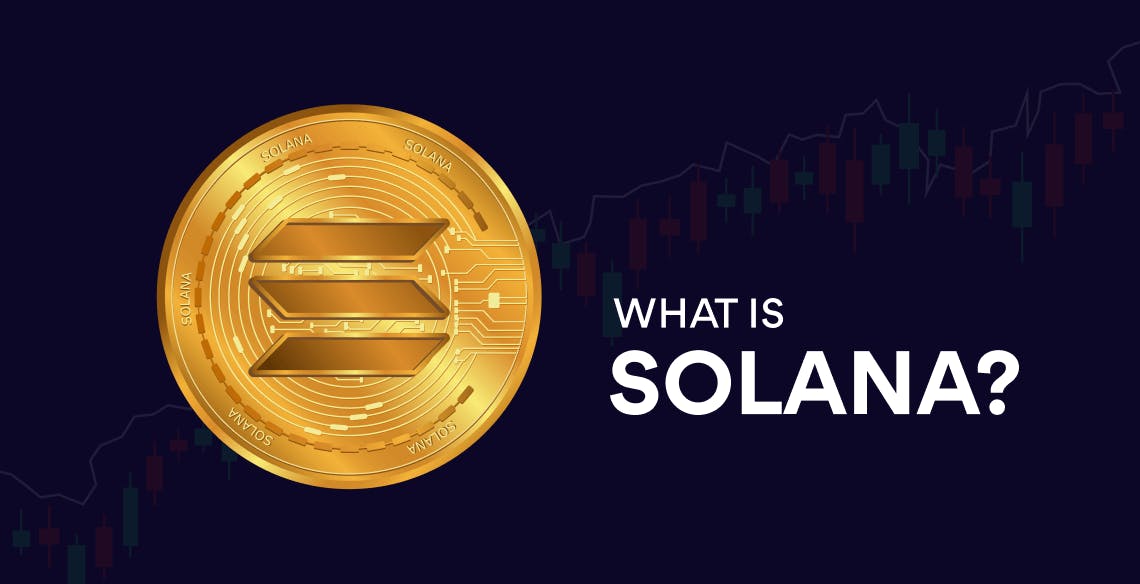What is Solana (SOL) Pay, and how does it work?
Solana Pay is an open protocol that developers can develop and customize with standardized payment criteria.
What is Solana?
Solana was founded in 2017 by Anatoly Yakovenko, a software developer with experience at Dropbox and other big tech companies. Yakovenko believed that while other Blockchain are efficient, or at least working towards efficiency, many of them do not consider time. Instead of each block depending on a standardized clock, each block runs in the local time of its relevant node. Why is this a problem? Without a standardized clock, transaction timestamps will vary for each block, and the acknowledgment time is another factor that all nodes must validate.
The more factors a node has to validate, the slower the transaction time. In Solana, all nodes run on the same clock, removing a validation factor and thereby speeding up the network. Yakovenko refers to this consensus method as Proof-of-History (PoH): a modified version of Proof-of-Stake (PoS) that takes time into account for verification purposes. Validation works similarly to Proof of Stake in Solana’s case. Solana uses only time as a test history record in addition to the proof-of-stake method.
As a result, Solana can process an average of 65,000 transactions per second with minimal fees. Solana is also a DeFi (smart contract decentralized finance) platform that competes with Ethereum (ETHtickers costs $1297).
Both platforms offer all kinds of decentralized finance DApps, some with their cryptocurrencies as well. Instead of Ether at the center of everything, the Solana token is SOL. SOL is used to transact and stake governance within the Solana network. and is given to the examiners as a reward. Otherwise, Solana has its own decentralized exchanges to trade the various tokens that build on its platform. Any DApp built on top of Solana will surely have its own on-chain and SOL compliant token decentralized exchanges provide an affordable way to buy such tokens.
Because Solana’s PoH consensus makes it possible to process tens of thousands of transactions per second without fees, Solana Labs is now creating Solana Pay to bring this transaction power to the masses.
How does Solana Pay work?
The Solana Pay digital payment platform offers businesses and consumers instant and free transactions that aim to have zero environmental impact by harnessing the power of the Solana blockchain network. The network claims to support 65,000 transactions per second and offers companies a software development kit to integrate the product.
Developers building DApps on Solana can integrate Solana Pay to facilitate transactions just like traditional retailers can implement if they have a Solana wallet. This accessibility is why many compare Solana to PayPal, claiming that Solana can do for crypto payments what PayPal did for traditional online payments.
Advantages of Solana Pay
Of course, Bitcoin (BTCtickers down $19,151), ETH and other cryptocurrencies claim to offer near-instant crypto payment, but these networks (Ethereum in particular) are expensive and not as fast as they might claim.
For example- Bitcoin averages seven transactions per second, while Ethereum averages thirteen transactions per second. Both Bitcoin and Ethereum are also bad for the environment. Solana’s network is faster and cheaper, which is attractive to businesses and customers. Solana Pay allows its users to pay in real time in SOL or any other compatible Solana token e.g. B. Real-time payments in USD Coin (USDC)ticks down by $1.00) without involving a third party such as a bank or payment processor. Plus, Solana Pay doesn’t allow chargebacks, eliminating a costly problem traditional merchants often face.
Solana Pay is also ideal for merchants, providing detailed reports on each transaction including wallet destination, currency type, transaction amount and text fields for the merchant to describe the transaction. These details are kept completely secret from the rest of the network, ensuring that both the customer and the merchant can transact without prying eyes.
As Solana Labs Head of Payments Sheraz Shere notes in his blog post announcing Solana Pay, the Solana team wants the world to view Solana Pay as something bigger than allowing users to “do with crypto.” pay”. Instead, Shere sees Solana Pay as a platform where “all the currencies are on-chain and used for a different variety of transactions,” he says.
Disadvantages of Solana Pay
Solana Pay is in early stages of development along with the Solana Network itself. For example, companies that switch to Solana Pay risk losing their assets due to a programming error or network attack. It’s possible to lose assets due to basic user error if the company isn’t familiar with crypto, as managing a crypto wallet doesn’t come naturally to everyone. Even though Solana is faster than many of its competitors, Ethereum is still much bigger platform total. Ethereum has many more DApps and a larger user base than Solana and the last Ethereum to Ethereum 2 move could also be problematic for Solana.


